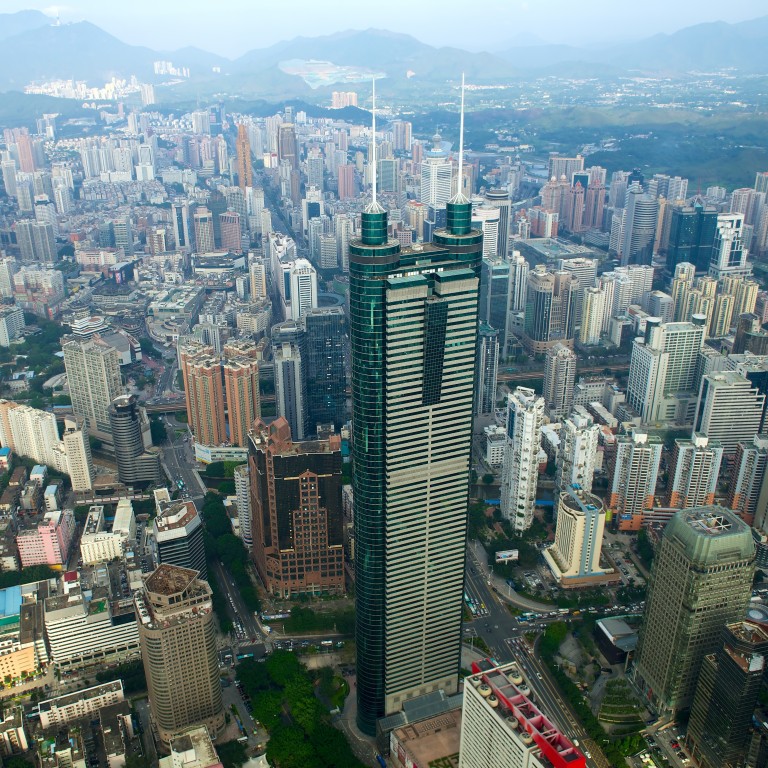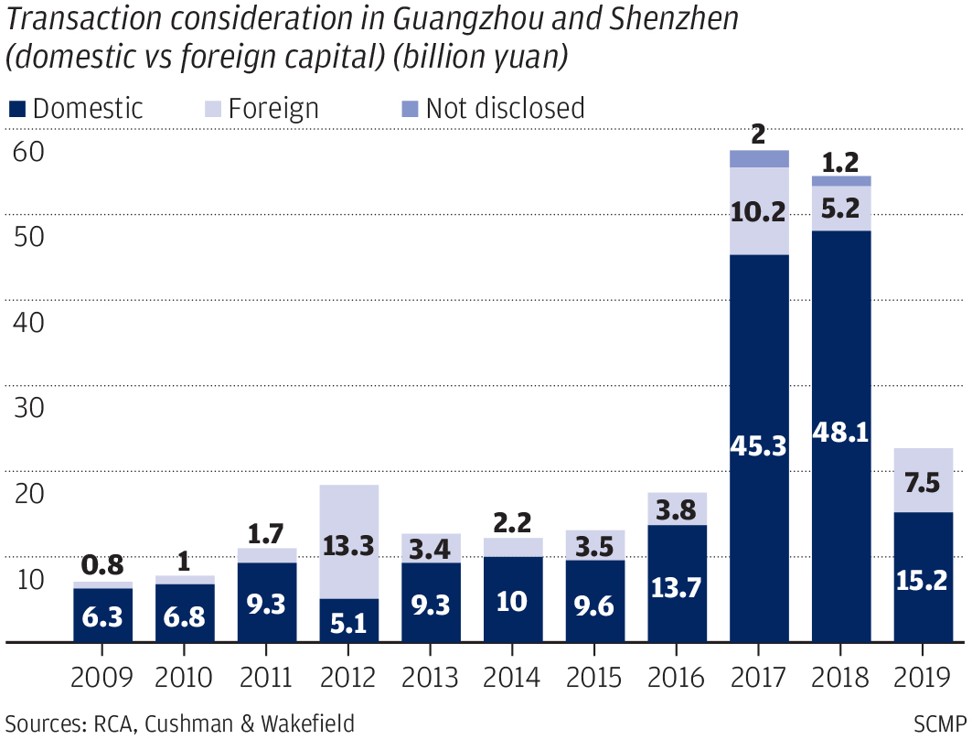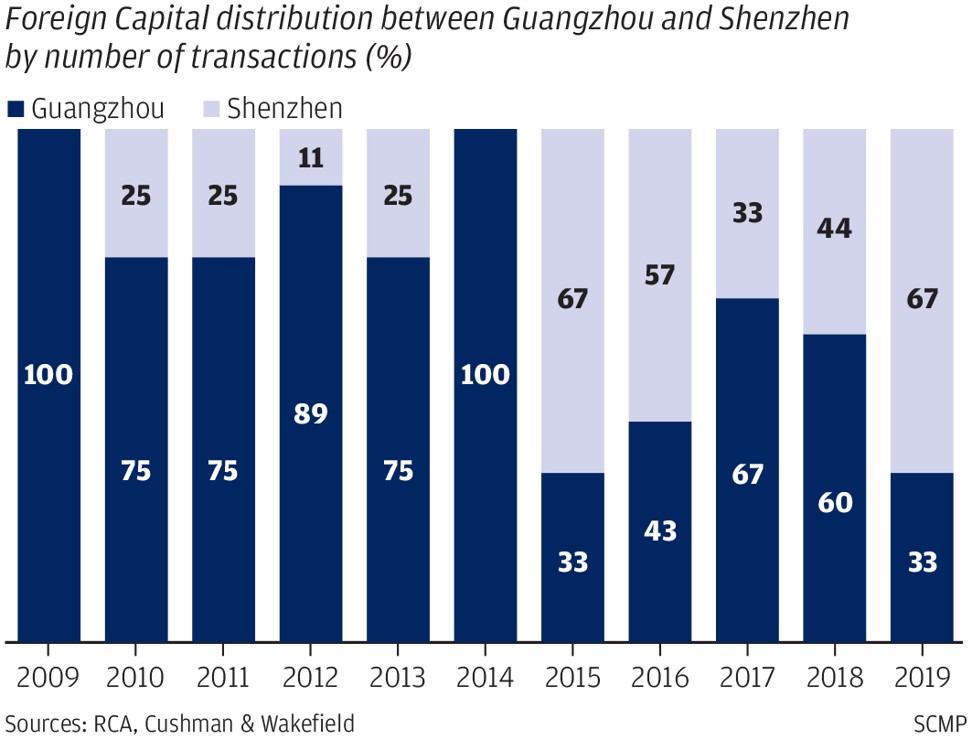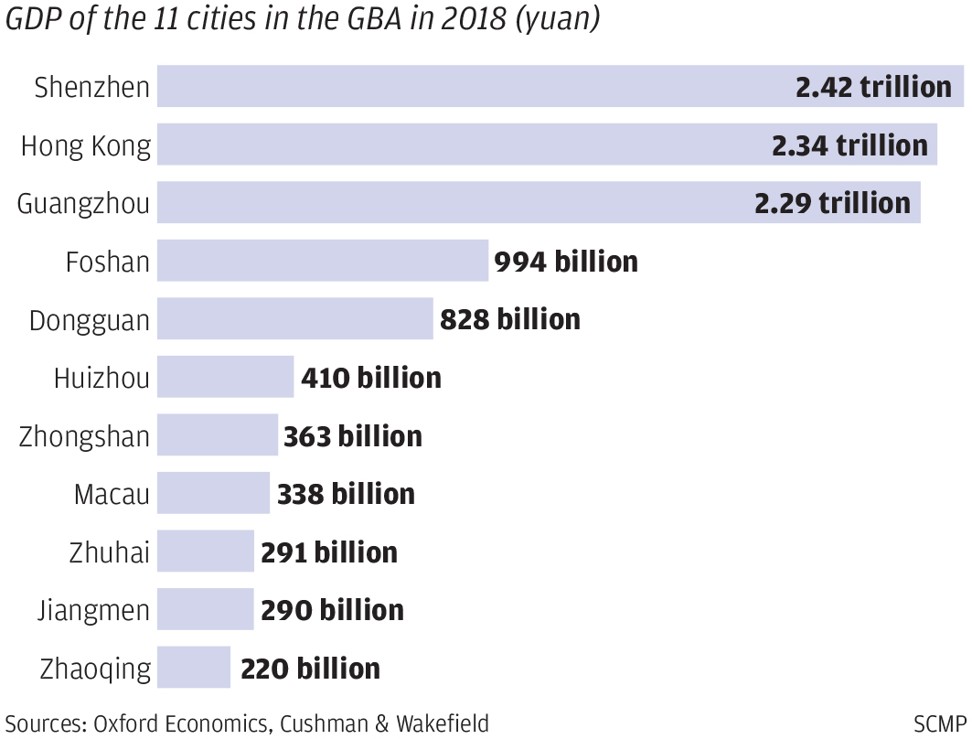
First-quarter foreign funds in Guangzhou, Shenzhen real estate top 2018 total as global investors find allure in Greater Bay Area
- Foreign interest in commercial property in two cities expected to continue after overseas investors pour US$1.09 billion in first quarter
Foreign investment in real estate in Guangzhou and Shenzhen, two core cities in Beijing’s Greater Bay Area scheme, hit 7.5 billion yuan (US$1.09 billion) in the first quarter of the year, up by nearly half from the 5.2 billion yuan seen in all of 2018.
According to the latest report from property consultancy Cushman & Wakefield, foreign investment in the two cities accounted for 33 per cent of the 22.7 billion yuan invested in the two cities in the first quarter.
“The [bay area] initiative has really shone the spotlight on Shenzhen and Guangzhou in terms of the growth prospects there, attracting more foreign investors,” said Reed Hatcher, director and head of research in Hong Kong at Cushman & Wakefield. “What we’ve seen in the first quarter is really the continuation of a trend we’ve seen in the past couple of years as foreign investors have become more active in the two cities. We expect this interest will continue over the course of this year.”
Even with the worsening US-China trade war, and the uncertainty over the Chinese economy, Hatcher said he believed that commercial real estate – sought after by foreign investors – in the two cities would remain resilient.
“Of course, that depends to some degree on how long the trade tensions go on. But even as trade tensions heated up late last year, we didn’t see any discernible drop in investment in commercial property in the two cities,” he said.
Following the announcement of the bay area initiative in 2017, foreign interest immediately picked up.
Between 2013 and 2016, foreign investment amounted to between 2.2 billion yuan and 3.8 billion yuan a year.
In the first quarter of this year, Shenzhen accounted for 67 per cent of the overseas inflow and Guangzhou 33 per cent, reversing a trend in 2017 and 2018, when the latter received a larger share of foreign capital.
Infinitus Property Investment, an affiliate of food company Lee Kum Kee, acquired a site at Guangzhou South Station being developed by property giant China Vanke for 1.2 billion yuan. The project is expected to be completed by 2020 with a portion to be used as Lee Kum Kee’s south China sales headquarters.
Sun Hung Kai Properties bought two development sites near the Qingsheng high speed railway station, an hour’s journey from the Kowloon West station, for a combined 1.46 billion yuan.
Kerry Properties also won a bid for a commercial site in Qianhai, a district in Shenzhen, for 2.6 billion yuan. It was the company’s third site in Qianhai.
The Greater Bay Area is Beijing’s initiative to link the special administrative regions of Hong Kong and Macau with nine neighbouring cities in the Guangdong province into an economic powerhouse. The 11 cities accounted for 12.5 per cent of the country’s gross domestic product in 2016.
Shenzhen and Guangzhou are among the most developed and wealthiest cities in China.
Shenzhen, home to China’s tech giants Tencent and Huawei, saw its GDP grow by 7.6 per cent to 2.42 trillion yuan in 2018, bigger than Hong Kong’s 2.34 trillion yuan economy.
Guangzhou’s GDP meanwhile grew by 6.5 per cent to 2.29 trillion yuan in 2018.
David Ji, head of research and consultancy for Greater China at Knight Frank, said the bay area plan was likely to have a bigger effect on the two cities in the long run.
“Depending on how the industries spread, I think it will have a positive impact on pricing over the long run. The scheme is just starting. All the current price drivers are not new,” Ji said.




